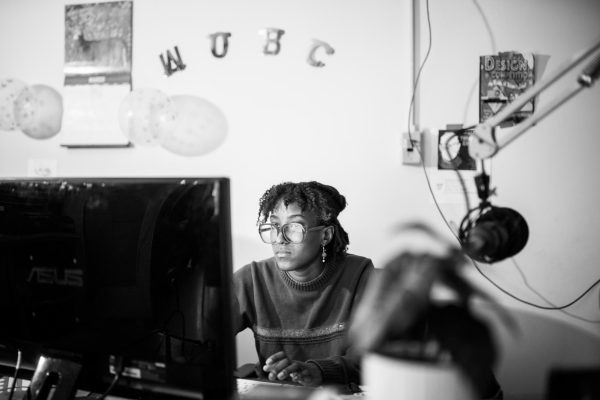Claims About Athletics Perpetuate Community Divisions
In order to produce tangible resolutions to discourse surrounding the athlete/non-athlete divide on campus arising from the “Athletics 101/Hate Sports?” panels, it is important that multiple perspectives are represented and that people on all sides of the issue are willing to really listen and hear one another. Though College fifth-year Marissa Maxfield made some valid points in her article, “Athletics Encourage Toxic Belief Systems,” the thinking behind some of her ideas contributes strongly to misconceptions about athletes (Oct. 27, 2017, The Oberlin Review.)
One of the key points Maxfield makes at the end of her article is that she wants to believe in the “Athletics 101/Hate Sports?” conversations aimed at solving some of these issues, but that she feels the conversations replicate existing displays of love for athletes while ignoring some of the key issues that prevail within Oberlin athletics.
After the first “Athletics 101” conversation, I agreed. I spoke with the organizers and voiced my opinions. The organizers also felt that we needed to hear more diverse opinions in order for campus culture to truly shift. In response, the format of the next event was changed to no longer feature a panel of coaches; in fact, the program was marketed completely differently. Posters that once screamed “athlete” with basketballs, bats, and “Athletics” sprawled across the foreground were replaced with ones that featured a simple black background with “Hate Sports?” as the headline. Through the changes in marketing, format, and conversations with students, panel organizer and Professor of English Yago Colás encouraged those with negative experiences with the athletic community to come and speak their minds.
This response is not meant to invalidate Maxfield’s experience. On the contrary, I think there are wider implications to this divide than just one person can express. With that being said, I feel that it is important to address some of the misconceptions to which Maxfield alludes because they serve to deepen the divide between athletes and non-athletes.
Early in her article, Maxfield states, “Occasionally, first-years are naïve enough to find natural friendships across athlete/non-athlete divides, but in my experience those relationships often do not last.” As an athlete who lives with non-athletes, I have found tremendous value in these relationships and I know many people with similar experiences. When non-athletes don’t make an effort to understand athletes’ lives and athletes don’t make an effort to understand non-athletes’ lives, it is certainly difficult for a relationship to be formed. But how is that any different from having relationships with people outside of Oberlin? Sure, differences in schedules and priorities are undeniable; sometimes, personalities simply don’t mesh. But that’s not to say that all relationships between athletes and non-athletes are bound to fail; correlation does not equal causation. During my time here, I have been able to form lasting relationships across athlete/non-athlete divides, so long as those relationships were based upon a foundation of listening to and understanding one another’s experiences.
Furthermore, one of the discussions in the most recent “Athletics 101/Hate Sports?” panel explored how, in a place like Oberlin that seeks to break down binaries, it seems that this goal can actually raise more barriers and binaries. For example, I have found that there seems to be a divide between the ways in which Oberlin is advertised and the experience students have once they get here. Oberlin is marketed as a place where everyone can come together, engage in intellectual conversation, and understand differing viewpoints. Yet before a non-athlete can have an experience with an athlete themself and vice versa, they have already been informed of a divide between North Campus and South Campus. Non-athletes and athletes are to be distinguished from one another, and anyone who does not hold liberal, atheist views (whether a non-athlete or athlete) is seen as an outsider not to be heard, let alone be accepted within the wider Oberlin community. These social norms and distinctions are already in place before first-years have even stepped on campus, and I fear that Maxfield’s statements only further some of these misconceptions. These views threaten the ideals that Oberlin was built on: that Oberlin should be a place of hearing and listening, rather than a place known for its lack of acceptance and homogenous viewpoints.
Surely to say that every non-athlete or athlete fits into these kinds of stereotypes is absolutely absurd; there are always going to be exceptions. While I sit further right on the political spectrum than the typical Oberlin student, one of my best friends is someone who self-identifies as “Liberal as Hell.” Similarly, though I identify as Christian, some of my best friends are Jewish and atheist. I have found that there will always be something that divides us. There is always something to disagree over, and there are few people with whom you will share all the same values. But with 2,895 students with similar academic priorities and so much going on in the world at such a pivotal time in our nation’s history, there’s plenty of room to find commonalities. We just need to choose to do so.


